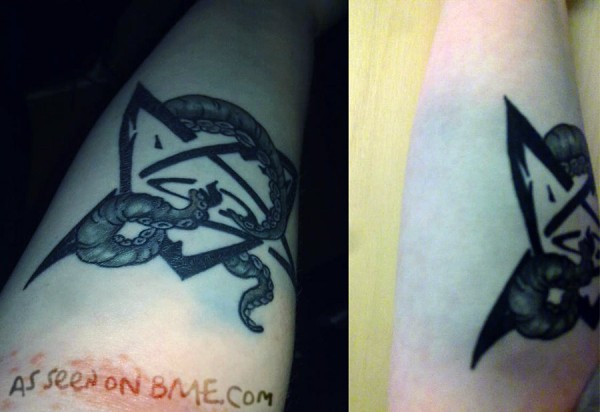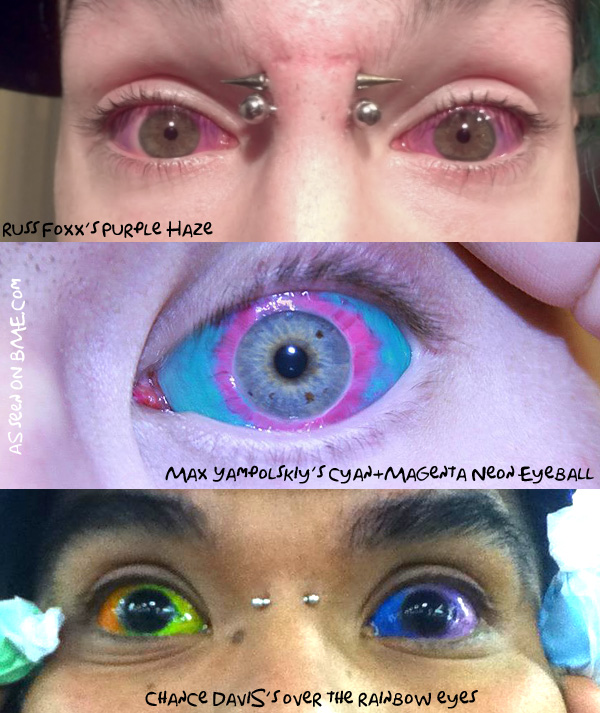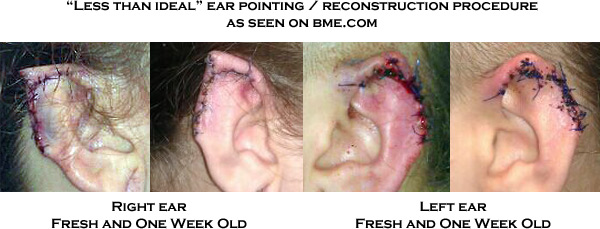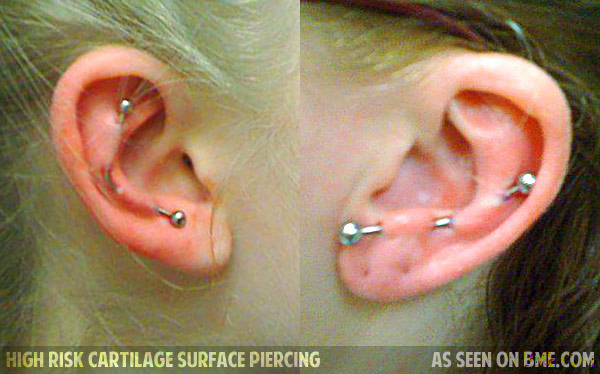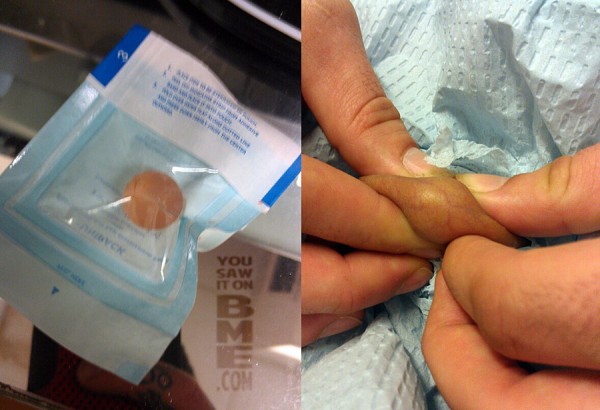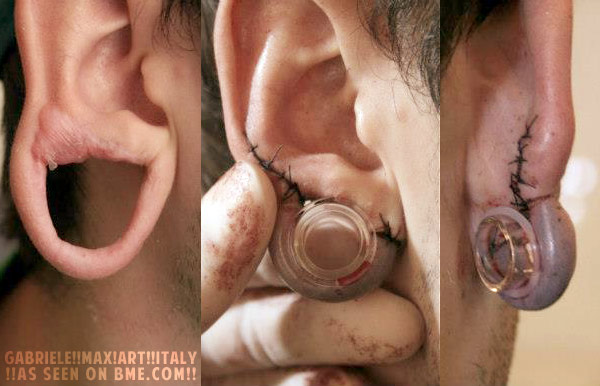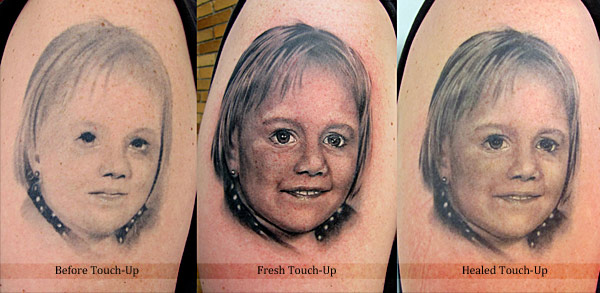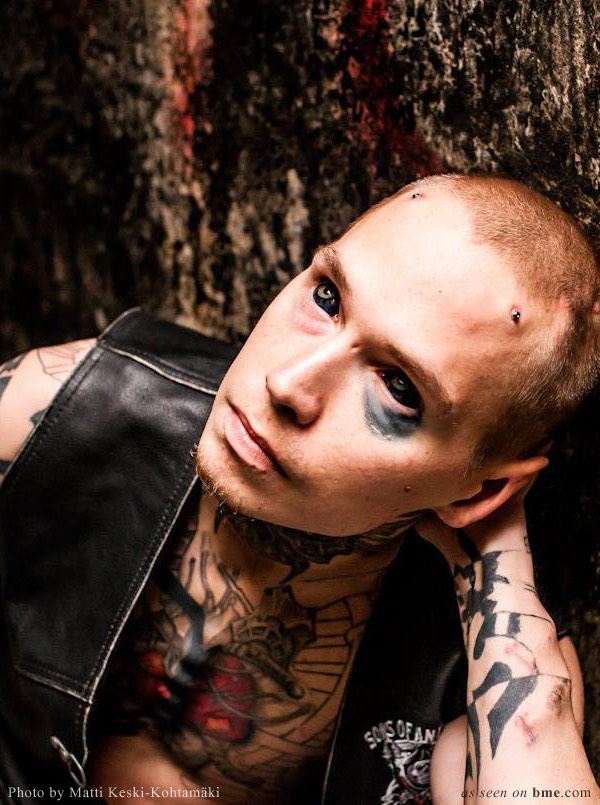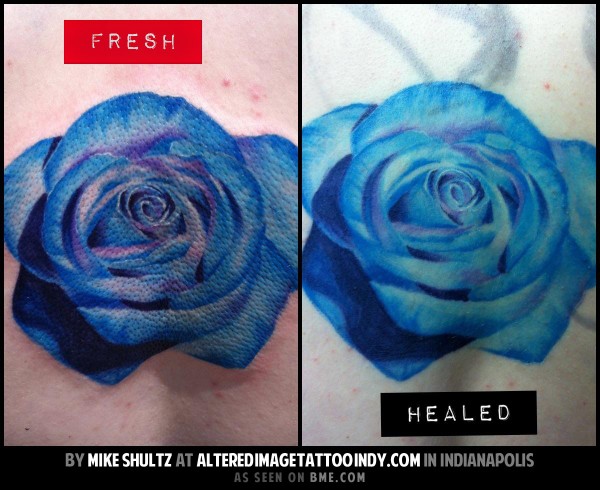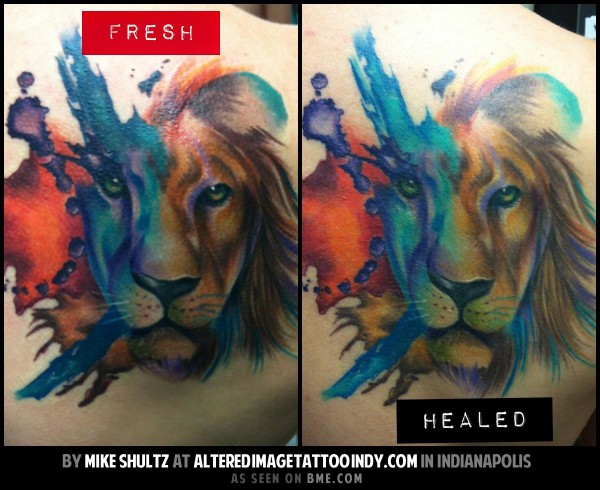Something that often surprises people is just how quickly a trapped infection can move from nonexistent to serious. These cheek piercings were about two months old and by all appearance doing just fine, when the wearer decided to switch the jewelry. In the process, they somehow managed to drag bacteria into the still-healing fistula, probably bacteria that was on their hands. Within the week the piercings were seriously swollen or infected, so they headed to their doctor, who insisted that the piercings be removed and put her on antibiotics. This photo was taken when she got home from the doctor.

Mistake number one: Changing the jewelry in a still healing piercing without proper attention to contamination control. Be aware that cheek piercings often take a long time to heal, and perhaps more importantly, piercings of all types will appear healed long before they actually are healed (and even young technically healed piercings may have very thin skin, making them highly susceptible to injury). Ideally a piercing that’s still healing shouldn’t have its jewelry changed, but if it must, the jewelry needs to be sterilized and gloves and other appropriate cross-contamination must be in place. Whenever possible this should be done at a piercing studio — most will autoclave and change jewelry for a small reasonable charge, or even do it for free when you buy the jewelry.
Mistake number two: When a piercing is infected with significant amounts of swelling and discharge, the presence of jewelry is both good and bad. It’s bad because a foreign substance in a wound can greatly increase the population of bacteria by giving them a “foothold”, but it’s good because it can keep the wound open and is often the only thing keeping the infection from becoming an abscess. The piercing allows the wound to drain, as the antibiotics (or alternative treatments) work to eliminate the infection — saline soaks and other treatments can also work to draw out the discharge, but can only do so if the wound is open. Even if antibiotics eliminate the infection, you can still have serious complications if a large pocket of pus is trapped under the skin. For this reason I feel it’s important to always have someone familiar with the treatment of troubled piercings involved in such complications — doctors are notorious for making problems with piercings worse due to their unfamiliarity with them, even today. Any reputable piercer is always happy to take the time to look at a piercing having difficulty (whether they did the piercing or not) and give you advice on how best to treat it (and that advice in this case likely would have been “go to the doctor, but don’t let them take out the piercing”). Better yet, piercers, unlike doctors, rarely charge for this service in my experience — although you should always tip them!!!
